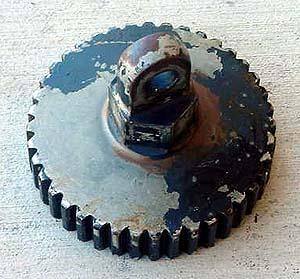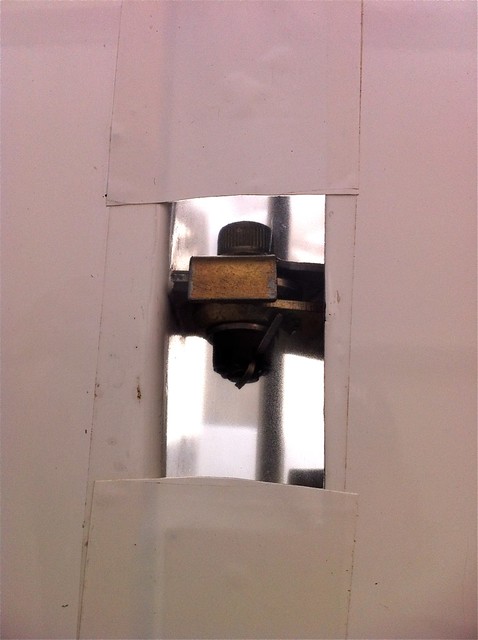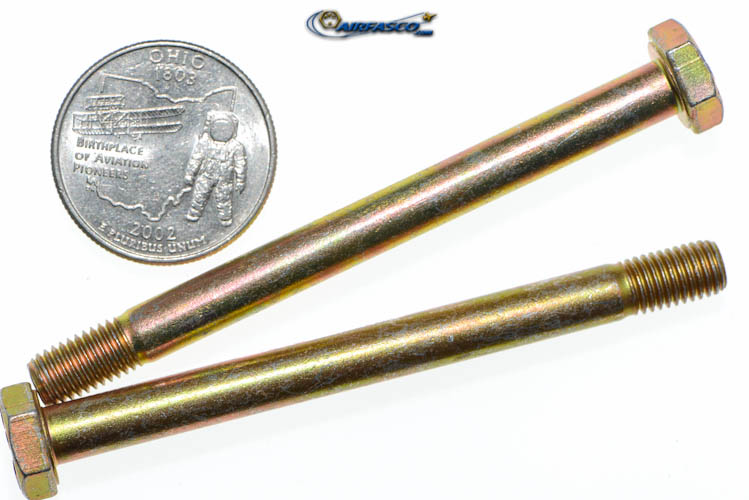Checkout_my_Six
Touchdown! Greaser!
If the wings are moving that much.....maybe you have termites in there? 
Haha! You're killin me smallssounds like they're weaker than we originally thought.
Forget the bolt, you’ve got intergranular corrosion all over the spar. Replace ASAP!
If you feel self conscious about it, just tell yourself you are wiggling the fuel in the tanks to make sure you catch any water when you sump.I do too! I kind of checked to make sure no one's watching when I do it. I feel silly doing it. But every flight LOL
So you know I'm totally going to Google that and then I'm going to be private messaging you a bunch of times going you're just kidding right?
Its funny because a lot of those have a torque check after a period of operation like 10 hours if removed or found to turn at a sceduled inspection torque check.

I'm a former UH-1N crew chief with "all-systems QA" and "safe-for-flight" designations. The procedure for torquing the "Jesus nut" was to torque it up to some ridiculous number I can't remember exactly. But, something like 600 ft/lbs, wait 10 minutes, then retorque. You keep doing this until the PowerDyn torque reading stays at the specified torque for the full 10 minutes.
This is "PowerDyn Torque Multiplier".

The Jesus Nut has teeth around the perimeter that engage with a keeper that is itself bolted with an AN bolt and torqued to standard value (I think about 25 ft/lbs) and safety wired.

The weakest link is not the Jesus nut. Its the Mast that the Jesus nut is torqued to. In a condition called "mast-bumping" the rotor head can contact the mast with enough force to damage it, leading to a catastrophic in-flight failure in which the rotor head separates from the helicopter. And, the helicopter tears itself apart inflight. Extremely rare. But, something I'd worry about sooner than I'd worry about the Jesus nut; at least on an aircraft that I maintain anyway.
Whenever I've had structural concerns, I've gone back and looked at the NTSB report history, where I've determined that the probability of a structural failure is far lower than the probability of me being an idiot and crashing because of my own stupidity.
The bolts in the strut are what really carry purd near all the weight of the airplane and will let the wing fold instantly if either one fails. So, yea. I would count those.I've seen (removed and installed new) the two bolts that hold a Cessna 182 wing on, okay four if you count the strut.
I'm a former UH-1N crew chief with "all-systems QA" and "safe-for-flight" designations. The procedure for torquing the "Jesus nut" was to torque it up to some ridiculous number I can't remember exactly. But, something like 600 ft/lbs, wait 10 minutes, then retorque. You keep doing this until the PowerDyn torque reading stays at the specified torque for the full 10 minutes.
This is "PowerDyn Torque Multiplier".

The Jesus Nut has teeth around the perimeter that engage with a keeper that is itself bolted with an AN bolt and torqued to standard value (I think about 25 ft/lbs) and safety wired.

The weakest link is not the Jesus nut. Its the Mast that the Jesus nut is torqued to. In a condition called "mast-bumping" the rotor head can contact the mast with enough force to damage it, leading to a catastrophic in-flight failure in which the rotor head separates from the helicopter. And, the helicopter tears itself apart inflight. Extremely rare. But, something I'd worry about sooner than I'd worry about the Jesus nut; at least on an aircraft that I maintain anyway.
“Flying something with a structural engineering flaw?”
If you feel self conscious about it, just tell yourself you are wiggling the fuel in the tanks to make sure you catch any water when you sump.
glue. strong stuff.
You didn't wiggle the cowl flaps now didja? (Too soon)?
I've seen (removed and installed new) the two bolts that hold a Cessna 182 wing on, okay four if you count the strut. That's why I'd rather fly my Cherokee.
Whenever I've had structural concerns, I've gone back and looked at the NTSB report history, where I've determined that the probability of a structural failure is far lower than the probability of me being an idiot and crashing because of my own stupidity.
The design loads dont bother me, its qc vs the lack of redundancy. An ancient strut bolt - was it xrayed? Ultrasonic? Magnafluxed? Or none of the above? Then add 40ish years of use to let the hidden internal defect grow.The aluminum spars would rip apart before those bolts would shear. They're big enough. A strut-braced airplane can get away with smaller hardware than the cantilevered wing like the one on your Cherokee. It's all about leverage. A 182's wing tries to pivot up under load, forcing the wing root inward and pulling on the struts, but those points are 40" apart or so. The Cherokee's bolts are only maybe eight inches apart, putting far more force on the spar roots and the hardware. That's why it's so beefy compared to the Cessna.
I've determined I'm an aviation hypochondriac.
Ever since the EARU arrow incident, I swear I'll be flying along and see my wing wiggle out of the corner of my eye.
I turn to look at it and of course it stops wiggling.
I had some down time. Imagine that. So for grins I decided to open an access panel and get some peace of mind.
I couldn't wait to find a sea of bolts and cotter pins.
2 bolts.
This is my wing spar. There is a bolt in front and one in back. They hold the wing tube to the spar. I don't see any attach points near the LE or TE. In fact their is a gap all the way around the wing by design. Nothing tightly affixing the wing to the body.
I get that it it is engineered and even over engineered but maybe a cotter pin or another couple bolts... Even a bit of safety wire...
This thing is going to be full on flapping out of the corner of my eye now.
I'm fully convinced if I ever designed a plane it would be too heavy to get off the ground.
View attachment 64465
Ugh...That's a good size bolt there, Bryan-with-a-Y. My Mooney, like all the rest of 'em built the last 50-odd years, has two little 1/4" bolts that hold the entire tail section to the fuselage. Wanna go for a ride? It's OK, with no back window you can hardly see even the tip of the horizontal stabilizer.
That's a good size bolt there, Bryan-with-a-Y. My Mooney, like all the rest of 'em built the last 50-odd years, has two little 1/4" bolts that hold the entire tail section to the fuselage. Wanna go for a ride? It's OK, with no back window you can hardly see even the tip of the horizontal stabilizer.
I believe they have to be replaced once and then inspected every 100 hours.

Yeeesh!Four of these 1/4" bolts is all that holds the engine on my mooney...

Four of these 1/4" bolts is all that holds the engine on my mooney...

Shear force vs. Tensile force.What really makes it seem small is that the bolts holding the engine to the mount are beefy 7/16" bolts, and then you hold the mount to the firewall with those itty bitty 1/4" bolts....
